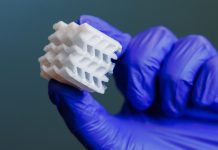
More than one hundred primary and secondary schools across Australia will receive polymer 3D printer, supporting software and lesson plans as part of GE’s Additive Education Program aimed at giving students hands-on additive manufacturing experience.
Now in its second year, the GE Additive Education Program received applications from over 3,000 schools worldwide. A total of six hundred schools from 30 countries have been selected to participate in the program, 103 of which are Australian.
Speaking at an event hosted by the North Sydney Demonstration School, one of the Australian schools selected for the program, President and CEO of GE APAC, Wouter Van Wersch said:
“Additive manufacturing will be one of the biggest disruptors in the future of industry, and Australia has a huge opportunity to lead in this globally.”
“Through our Additive Education Program, GE aims to help build a strong pipeline of additive manufacturing skills – starting from the classroom – so that the next generation are on the front foot to take on future manufacturing opportunities,” Mr Van Wersch added.
GE Australia’s CEO, Max York noted that the 2018 GE Additive Education Program was the largest rollout of its kind in Australia.
“Australia has always been early adopters of technology and the fact that the highest number of schools awarded in this program, after the United States, are Australian shows that we are punching above our weight in this rapidly growing industry.”
“I’m thrilled that through this program, approximately 30,000 students in Australia will now have access to 3D-printing technology and gain skills from our global education curriculum,” Mr York stated.
The education curriculum associated with GE’s Additive Education Program was created by Adelaide-based startup Makers Empire and STEAMtrax.
“We are passionate about empowering students and teachers with the power of 3D printing to develop design thinking and 21st century learning skills,” said Makers Empire CEO, Jon Soong.
“The GE Additive Education Program benefits schools by providing exposure to 3D printing and encouraging students to incorporate the technology into a broader problem-solving approach.”
The polymer 3D printing packages will be delivered to the selected primary and secondary schools later this year.




















